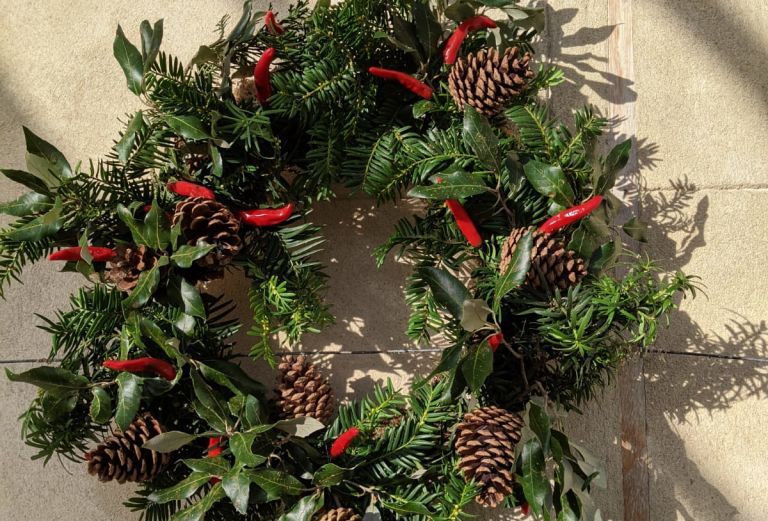
Ilex aquifolium (common holly)
Ilex aquifolium or holly is probably one of the most popular plants in winter time, included in many songs and used as decorations all over the world for hundreds of years. Everyone from young to old know exactly what it is, with its frankly unique prickly, glossy deep green leaves and beautiful red berries. Whenever I see holly in December, I immediately feel a little bit Christmassy!
The holly plant is striking in any setting as there’s nothing that looks quite like it here in the UK. It is variable in growth habit and can be in either tree or shrub form which can exceed ten meters in height, but more often grows to only two to three meters. It is an excellent formal hedging plant and can look wonderfully crisp surrounding a garden as it holds its structure very well, and could also provide a perfect background for planting a colourful border in front.

Ilex takes the glory of being the only living genus in the family Aquifoliaceae and is incredibly variable, with around 480 species that could be climbers, deciduous or evergreen trees, or shrubs, from the tropics to temperate zones worldwide. Ilex aquifolium is one of the very few British native evergreen trees and is often found in woodlands, often by your jumper first!
Bishop Compton grew Ilex aquifolium ‘Ferox’, or the hedgehog holly, for the first time in the UK at Fulham Palace after importing it from France. It can be found in all its glory in the garden! It’s so wonderful that we have a great historical and botanical link to this brilliant genus along with many other plants that Compton introduced.
Overall I think we can say for sure that holly is a wonderful, versatile plant that brings so much importance, horticulturally, historically and socially.
by Millie Woodley, garden apprentice
